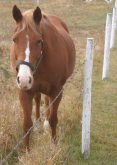WILLIAMS LAKE, B.C. — In a green thinking province like British Columbia, beef producers have decided to take a new approach and promote their industry as an environmental benefit to society.
“We kept asking for grass. We are changing our ask. The ecosystem needs grass. The wildlife needs grass,” said Larry Garrett, who is in the middle of a two-year term as president of the B.C. Cattlemen’s Association.
The public may not buy into carbon sequestration of grasslands and forests but they do favour strategies to help wildlife diversity. The cattle producers want the public to see how their work is part of the circle of life where ecosystems, grass management and wildlife are linked together.
Read Also

Beef check-off collection system aligns across the country
A single and aligned check-off collection system based on where producers live makes the system equal said Chad Ross, Saskatchewan Cattle Association chair.
Grasslands create the diversity and restore soil health.
“Grass first and the rest of it will look after itself,” Garrett said in an interview during the association’s recent annual meeting in Williams Lake.
The province has released $500,000 to launch targeted grazing programs for fire suppression. However, much of the pasture land is on crown land and without long-term tenure, few producers may be willing to make the necessary changes to adopt new practices.
Logging companies are required by law to replant trees but there is no biodiversity in these new plantations, said Garrett.
Open grasslands promote biodiversity in the soil and above ground, said Werner Stump, chair of the land stewardship committee.
The committee is promoting the environmental advantages of grasslands forage production as a key part of pre- and post-fire treatment, fire prevention and forest resilience.
“When we look at some of the landscapes that have evolved around us, it is not like it used to be before we started our management practices. Some of the traditional forms of management promoted biodiversity promoting fire as a tool. Having open forests is part of that healthy mix,” he said.
“Our forests are not in a great state of health right now. There is not a lot of resilience to forest pathogens and fire.…
“That diverse landscape can create some of that resilience.”

















